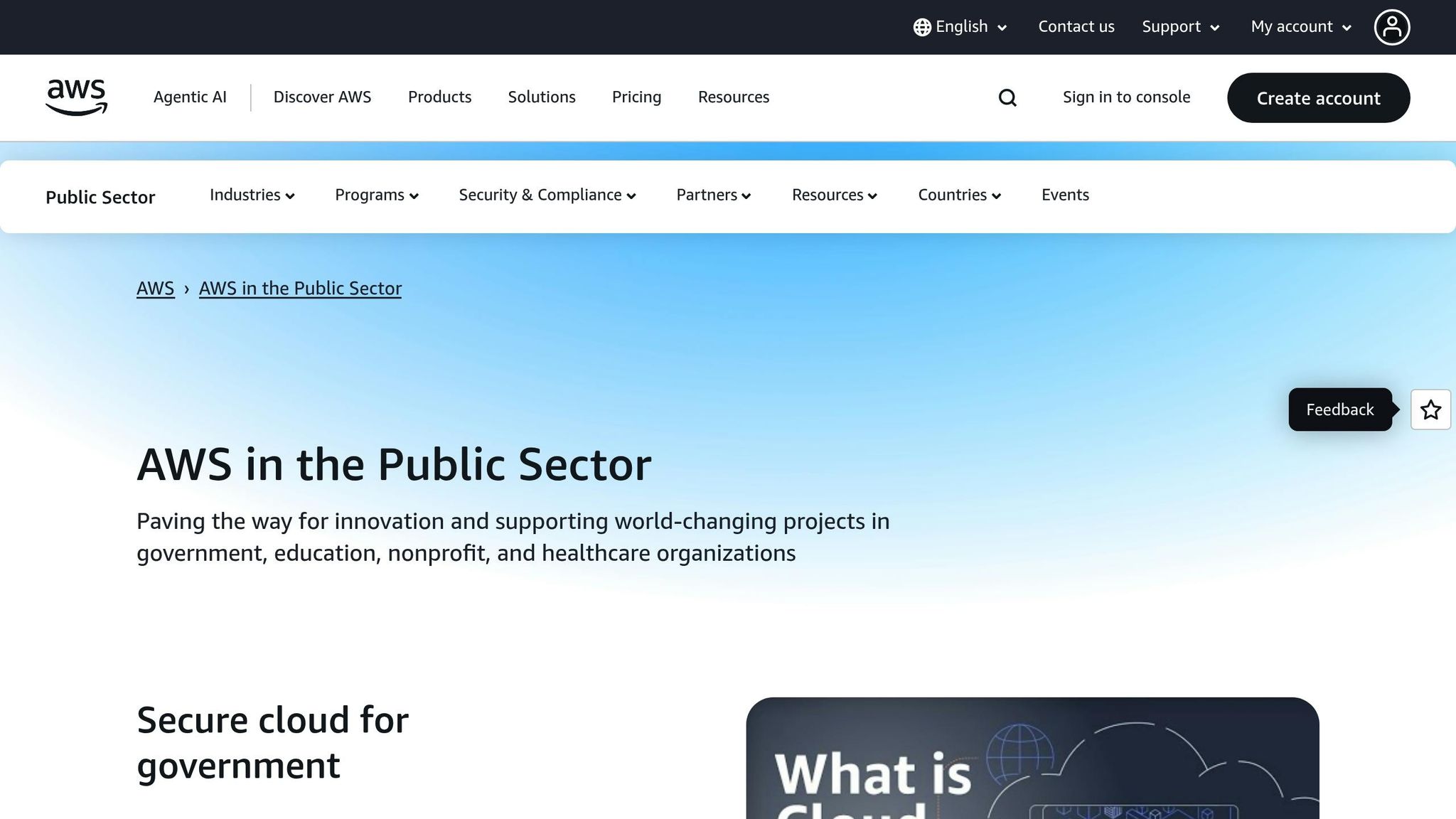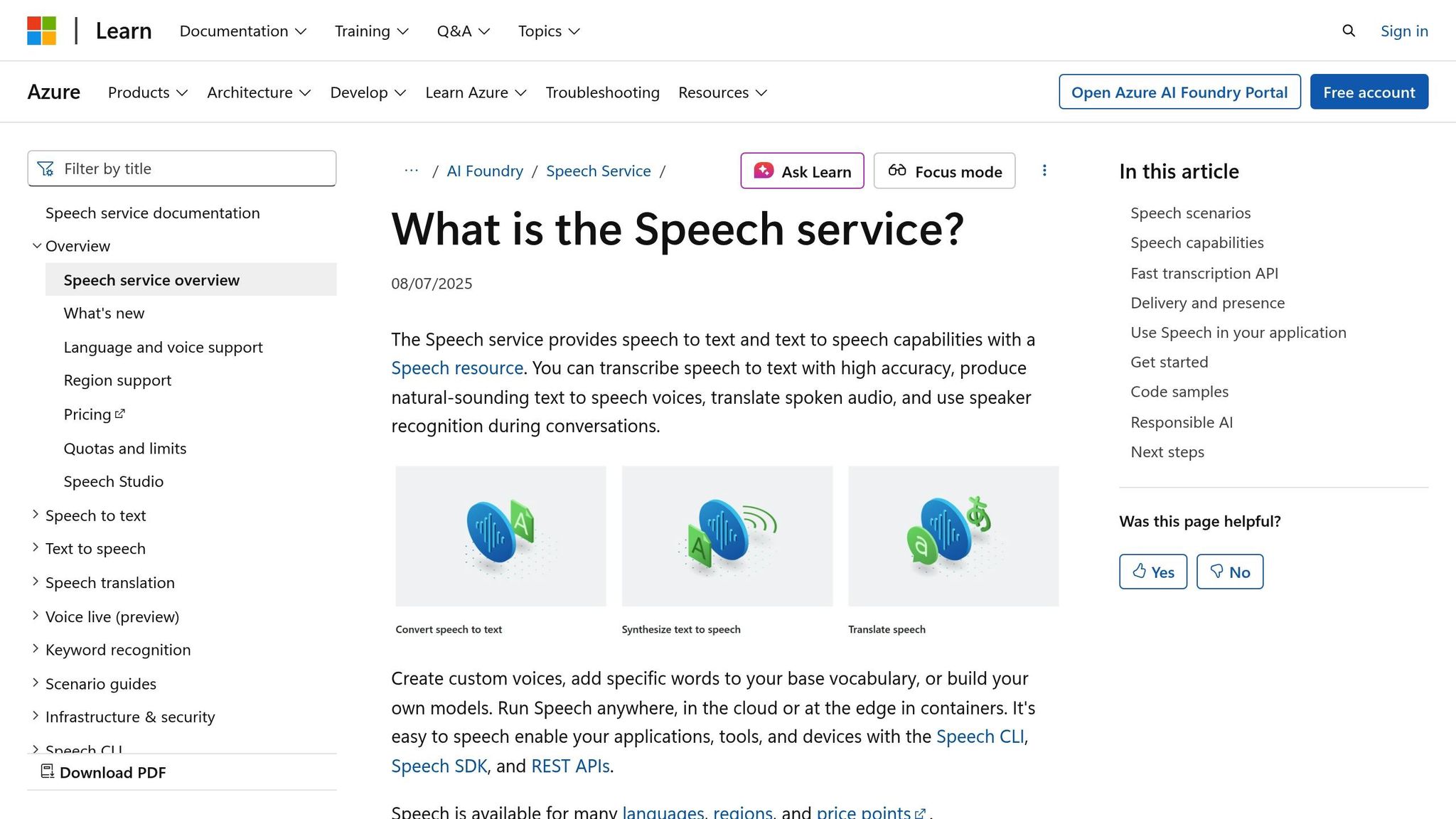Case Study: ASR in Multilingual Call Centers
Explore how ASR technology is revolutionizing multilingual call centers by enhancing communication, reducing costs, and improving customer satisfaction.

Automatic Speech Recognition (ASR) is transforming multilingual call centers by enabling real-time voice-to-text transcription, translation, and automated responses across multiple languages. This technology helps businesses lower costs, improve customer service, and handle diverse linguistic needs without relying entirely on a multilingual workforce.
Key Takeaways:
- Real-Time Support: ASR transcribes and translates conversations instantly, bridging language gaps for agents and customers.
- AI-Powered Automation: Voicebots handle routine queries in various languages, reducing the need for human agents and improving efficiency.
- Cost Savings: By replacing or supplementing multilingual staff, ASR reduces operational expenses while scaling global support.
- Enhanced Insights: ASR systems analyze customer interactions to identify trends, improve service, and monitor sentiment across languages.
Businesses like Microsoft and Vodafone have successfully implemented ASR, achieving higher customer satisfaction and operational efficiency. ASR is a practical solution for companies managing global customer bases, offering consistent and scalable support without the logistical challenges of traditional multilingual call centers.
Multi Lingual Contact Center - Medicaid | AWS Public Sector

Business Challenges in Multilingual Call Centers
Operating a multilingual call center comes with its own set of hurdles that go beyond the typical challenges of customer service. As businesses expand their reach across borders, these obstacles can slow operations, affect customer satisfaction, and reduce overall efficiency. These issues highlight the growing need for advanced ASR tools to streamline multilingual call center operations.
Language Barriers and Accent Diversity
One of the biggest challenges is navigating the complexities of language, including regional dialects and cultural subtleties. Even the most skilled agents may face difficulties when dealing with technical terms or unfamiliar accents. This can result in miscommunication, longer call durations, and, ultimately, a less satisfying experience for the customer.
Costs and Scaling Issues
Managing costs and scaling operations is another major hurdle. Hiring native speakers, providing multi-language training, and coordinating schedules across different time zones come with hefty expenses. On top of that, traditional staffing and infrastructure models often lack the flexibility to handle unexpected spikes in call volumes. This rigidity can lead to delays, as resources are not easily shifted between language groups to meet fluctuating demand.
How ASR Improves Multilingual Call Centers
ASR technology is changing the game for multilingual call centers by making communication smoother and operations more efficient. Instead of relying entirely on human agents to overcome language barriers, ASR provides a tech-driven solution that enables seamless multilingual interactions. It also cuts costs and boosts scalability, making it a win-win for businesses and customers alike. Let’s dive into how features like real-time language support, AI-powered voicebots, and advanced analytics are transforming call center performance.
Real-Time Language Support
ASR systems are equipped with transcription and translation tools that break down communication barriers between agents and customers. For instance, if a customer calls speaking Spanish, Mandarin, or Arabic, the ASR system transcribes their speech in real-time and translates it for English-speaking agents. This allows agents to quickly understand customer needs without sharing the same native language.
What’s even better? ASR systems offer bidirectional support. Agents can type their responses, which the system instantly converts into the caller’s language. This means call centers can cater to a broader range of languages without needing a native speaker for every single one.
Over time, these systems get smarter. They learn to recognize different accents, regional speech patterns, and even colloquialisms, making their translations more accurate and culturally relevant.
Automation with AI-Powered Voicebots
Voicebots powered by ASR take automation to the next level. These bots can handle routine inquiries in multiple languages, whether it’s checking account balances, providing store hours, or guiding customers through basic troubleshooting steps.
Available 24/7, voicebots eliminate the need for round-the-clock staffing of native speakers. They also reduce wait times by routing more complex issues directly to human agents. For global companies serving customers across various time zones, this is a game-changer.
These bots don’t just answer questions - they analyze. By detecting the language, accent, and complexity of a customer’s request, they ensure calls are directed to the best-suited agent when escalation is necessary. This intelligent routing improves efficiency and ensures customers feel heard and understood.
Better Analytics and Insights
ASR doesn’t just assist in real-time - it also captures and analyzes every customer interaction, creating a treasure trove of multilingual data. This data uncovers trends in customer behavior, identifies common issues, and measures satisfaction levels across different language groups.
One standout feature is sentiment analysis. ASR can pick up on emotions like frustration or dissatisfaction, regardless of the language being spoken. This allows supervisors to step in and de-escalate situations before they spiral out of control.
ASR also helps managers track performance. It reveals which languages tend to bring up the most complex issues, highlights agents who excel in multilingual support, and pinpoints areas where additional training might be needed. These insights lead to smarter decisions about staffing and resource allocation.
Additionally, ASR can identify frequently asked questions in each language, helping call centers create better self-service tools and knowledge bases tailored to specific linguistic needs. This reduces call volumes while improving the overall customer experience for all language groups.
Case Study: Real-World Applications of ASR in Multilingual Call Centers
Automatic Speech Recognition (ASR) technology is transforming multilingual call centers by simplifying communication, breaking down language barriers, and improving overall efficiency. Let’s look at how leading companies have successfully implemented ASR in real-world scenarios.
Case Example 1: Microsoft Azure Speech Services

Microsoft's customer service team rolled out Azure Speech Services globally to support several languages, including Spanish, French, German, Japanese, and Portuguese. This solution enabled English-speaking agents to communicate seamlessly with international customers in their native languages. The results? Better first-call resolution rates, higher customer satisfaction, and fewer call transfers. Additionally, the company extended its support hours for global markets without needing to hire language-specific agents, leveraging its existing English-speaking workforce.
Case Example 2: Vodafone's Multilingual Voicebot

Vodafone introduced ASR-powered voicebots across its European operations to handle routine customer inquiries in multiple languages, such as English, German, Italian, Spanish, and Dutch. These voicebots managed tasks like billing questions, plan changes, and technical troubleshooting, automating a large portion of customer interactions. This implementation not only reduced operational costs but also allowed human agents to concentrate on more complex customer issues, boosting overall productivity.
Key Considerations in ASR Implementations
These examples underscore critical factors businesses should evaluate when adopting ASR solutions for multilingual call centers. Key considerations often include:
- Language and accent recognition: Ensuring the system effectively understands diverse accents and dialects.
- Real-time processing and translation: The ability to process and translate conversations instantly.
- Seamless integration: Compatibility with existing customer service platforms.
- Flexible pricing and support: Options that align with business needs and budgets.
By thoroughly assessing these aspects, companies can choose an ASR solution tailored to their specific requirements, ensuring it meets both operational goals and customer expectations.
These success stories showcase how ASR can lower costs and improve customer interactions. For organizations exploring similar opportunities, NAITIVE AI Consulting Agency offers expertise in crafting and managing advanced AI solutions, including ASR integrations. Their experience in AI-driven automation and process optimization can help businesses streamline customer interactions and scale their call center operations effectively.
Best Practices and Future Trends
Best Practices for ASR Implementation
To successfully implement Automatic Speech Recognition (ASR) systems, it's essential to ensure they can handle mixed-language conversations and code-switching - a common practice where speakers switch between languages within a single conversation. Using advanced language models is key to maintaining accuracy and adapting to real-world scenarios. These steps lay the groundwork for the exciting developments transforming ASR technology.
Emerging Trends in ASR
The latest trends in ASR are all about tackling the challenges posed by dynamic language use, especially in multilingual call centers. Studies reveal that traditional single-language ASR systems often fall short when dealing with frequent code-switching. To address this, next-generation ASR solutions are being developed with the ability to adapt in real-time, ensuring seamless transitions across languages. These systems utilize cutting-edge language models to handle diverse inputs with remarkable precision.
For businesses looking to adopt these advancements, collaborating with seasoned AI consulting services can streamline the process and fine-tune system performance. NAITIVE AI Consulting Agency is a trusted partner in this space, offering expertise in advanced AI solutions like ASR integrations and autonomous voice agents. They help businesses navigate the complexities of multilingual customer service technologies with ease and efficiency.
Conclusion
Automatic Speech Recognition (ASR) is reshaping multilingual call centers by removing language barriers, boosting customer satisfaction, and cutting operational costs. Its real-time language support eliminates frustration for customers, while AI-driven voicebots efficiently handle routine inquiries. On top of that, advanced analytics offer actionable insights that help fine-tune customer service strategies. All these benefits lead to lower costs and improved scalability for businesses.
By automating initial customer interactions and streamlining call routing, ASR significantly reduces expenses. It also enables companies to enter new markets without the need for a proportional increase in support staff. Real-world examples, like Microsoft and Vodafone, showcase how ASR has delivered measurable success in practical applications. Plus, with advancements in handling code-switching, ASR is becoming an even more valuable asset for global businesses.
For organizations exploring ASR, working with seasoned AI consulting services can make all the difference. NAITIVE AI Consulting Agency offers deep expertise in ASR integrations and autonomous voice agents, helping businesses tackle technical challenges while reaping the full benefits of multilingual customer service solutions.
ASR is paving the way for a multilingual, automated, and smarter future in customer service, building on earlier insights into its transformative potential. It’s not just a tool - it’s the foundation for what’s next in delivering exceptional, scalable support.
FAQs
How does ASR technology manage different accents and dialects in multilingual call centers?
ASR (Automated Speech Recognition) technology leverages AI and machine learning to interpret and process different accents, dialects, and speech patterns. These systems are built to navigate linguistic subtleties, regional differences, and even background noise, delivering precise transcriptions and smooth communication.
Modern ASR solutions improve over time by learning from a wide range of speech inputs. This continuous refinement boosts customer interactions and streamlines operations, particularly in multilingual call centers. Their ability to handle diverse linguistic needs makes them a powerful tool for businesses catering to audiences with varied cultural and language backgrounds.
What should businesses focus on when implementing ASR solutions for multilingual customer support?
When introducing ASR (Automatic Speech Recognition) solutions for multilingual customer support, the focus should be on achieving precise language detection and accommodating various dialects. This often means fine-tuning models with a wealth of training data to deliver reliable and relevant results.
Ensuring high-quality audio input is crucial, as it directly affects how well the system recognizes speech. Regularly updating ASR models and using customer feedback to refine the system can significantly improve performance over time. It's also important to make sure the solution is scalable, secure, and flexible to adapt to evolving business demands and customer needs.
How do AI-driven voicebots improve customer service in multilingual call centers compared to human agents?
AI-powered voicebots are transforming how multilingual call centers deliver customer service. They offer quicker response times and maintain consistent service quality across languages. Unlike human agents, these voicebots can effortlessly switch between multiple languages, ensuring customers get support in their preferred language without delays or miscommunication.
Another major advantage is their 24/7 availability, which allows call centers to provide nonstop assistance while cutting down on operational expenses. Plus, their ability to analyze customer data on the fly and adjust responses in real-time makes interactions more tailored and efficient, enhancing the overall customer experience.




